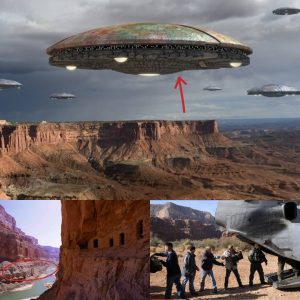After 10 months of intensive research, scientists in Mexico discovered the largest flooded cave system in the world, and it is truly a wonderland of the underwater.

This undated photo released by Mexico’s National Anthropology and History Institute shows divers from the Great Mayan Aquifer project (L) exploring the Sac Actun underwater cave system, where Mayan and Pleistocene bones and cultural artefacts have been found submerged, near Tulum, Mexico.
Incredible 347 kilometers (216 miles) of subterranean caverns, this branching, sunk labyrinth is not only a natural spectacle – it is also an important archeological discovery that may expose the forgotten mysteries of ancient Mayan civilization.
“This immense cave is the largest submerged archaeological site in the world,” says Guillermo de Anda, an underwater archaeologist from Mexico’s National Institute of Anthropology and History.
“It has more than a hundred archeological sources, including the evidence of the first settlers of America, as well as the extinct fauna and, of course, the Mayan culture.”

The largest underwater cave in the world was discovered in Mexico by explorers from the Gran Acuífero Maya.
De Anda is heading the Great Maya Aquifer Project (GAM), a research project which for decades that has been investigating underwater caves in the Mexican state of Quintana Roo, situated on the Caribbean coast of the Yucatan Peninsula.
The region hosts a stunning 358 submerged cave systems, representing some 1,400 kilometres (870 miles) of flooded freshwater tunnels hidden under the surface.
Amongst this sprawling network, a new leader emerged last week. Called the Sac Actun System, this gargantuan passage is so big it was actually thought to be two different cave systems.

A diver from the Great Mayan Aquifer project looking at human remains believed to be from the Pleistocene era, in the Sac Actun underwater cave system, near Tulum, Mexico.
Before now, another system called Dos Ojos (‘two eyes’) spanning 93 kilometres (57.8 miles) was thought to be distinct from Sac Actun, but an exhaustive 10 months of underwater probing proved the two were actually one giant continuous cavity.
“We came really close a few times. On a couple of occasions, we were a metre from making a connection between the two large cave systems,” GAM exploration director Robert Schmittner told Mexican newspaper El Pais.
“It was like trying to follow the veins within a body. It was a labyrinth of paths that sometimes came together and sometimes separated. We had to be very careful.”

Photos by: Gran Acuifero Maya
That effort paid off, and under the rules of caving, Sac Actun now absorbs Dos Ojos (and its former length), meaning at 347 kilometres long Sac Actun is now the world’s largest known underwater cave – beating out the former frontrunner, the Ox Bel Ha System, also in Quintana Roo, which stretches for 270 kilometres.
But the search isn’t over yet. Sac Actun stands to grow even larger, with the researchers saying it could be connected to three other underwater cave systems – provided further dives can show the caverns do indeed link up.
Those dives won’t just shed light on how deep the fish hole goes, either.
As footage in the researchers’ video and photos show – untold volumes of preserved Maya artefacts and human remains are just waiting to be discovered and analysed from within this unprecedented cave system.
Ultimately, the scientific implications could be just as massive as the cave itself.

A Mask of the Mayan god of trade in the Gran aquifer of Sac Actun in Quinta Roo state, Mexico.
“We’ve recorded more than 100 archaeological elements: the remains of extinct fauna, early humans, Maya archaeology, ceramics, and Maya graves,” de Anda told the Mexican media.
“It’s a tunnel of time that transports you to a place 10,000 to 12,000 years ago.”
After 10 months of intensive research, scientists in Mexico discovered the largest flooded cave system in the world, and it is truly a wonderland of the underwater. This undated photo released by Mexico’s National Anthropology and History Institute shows divers from the Great Mayan Aquifer project (L) exploring the Sac Actun underwater cave system, where…





